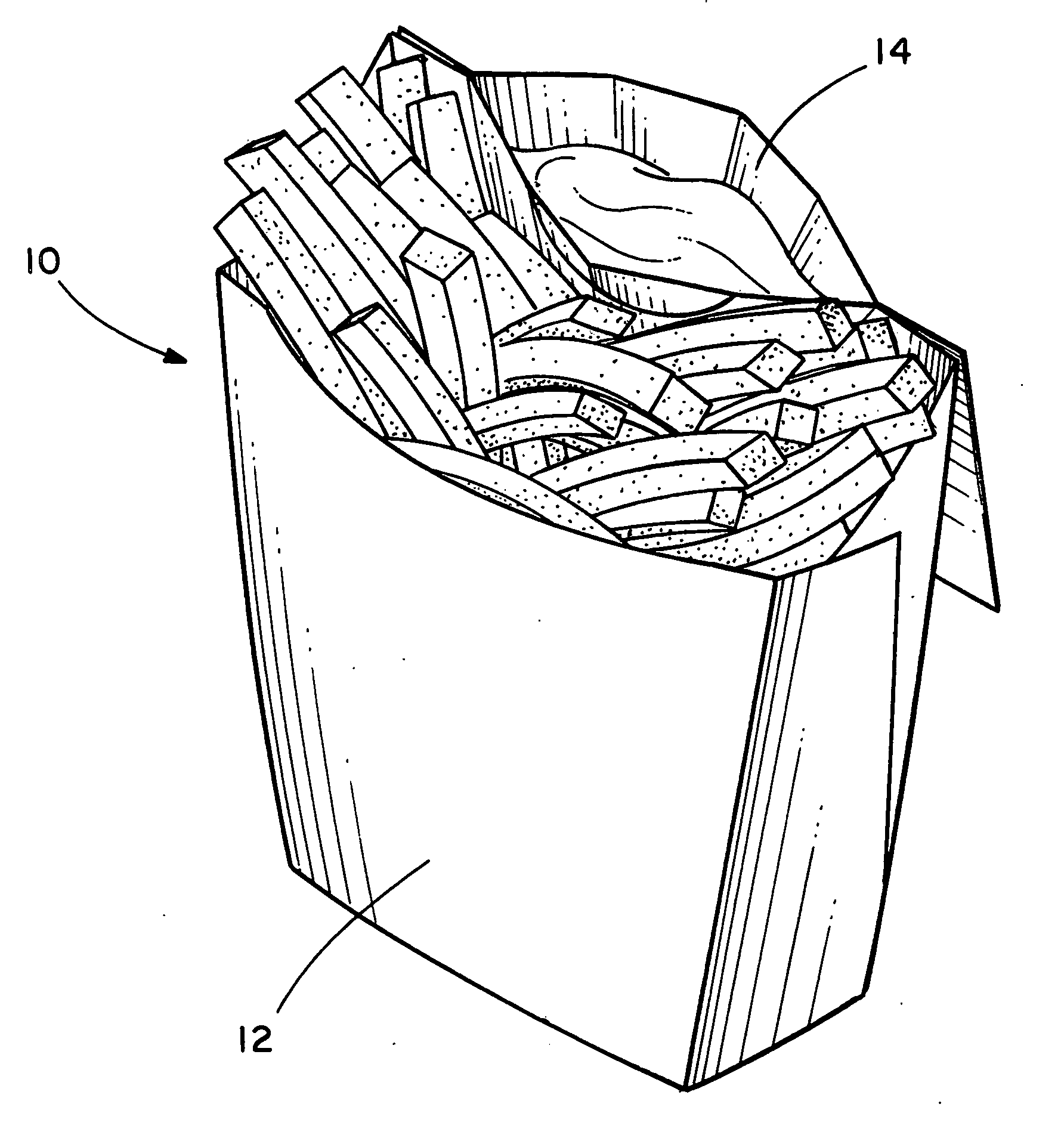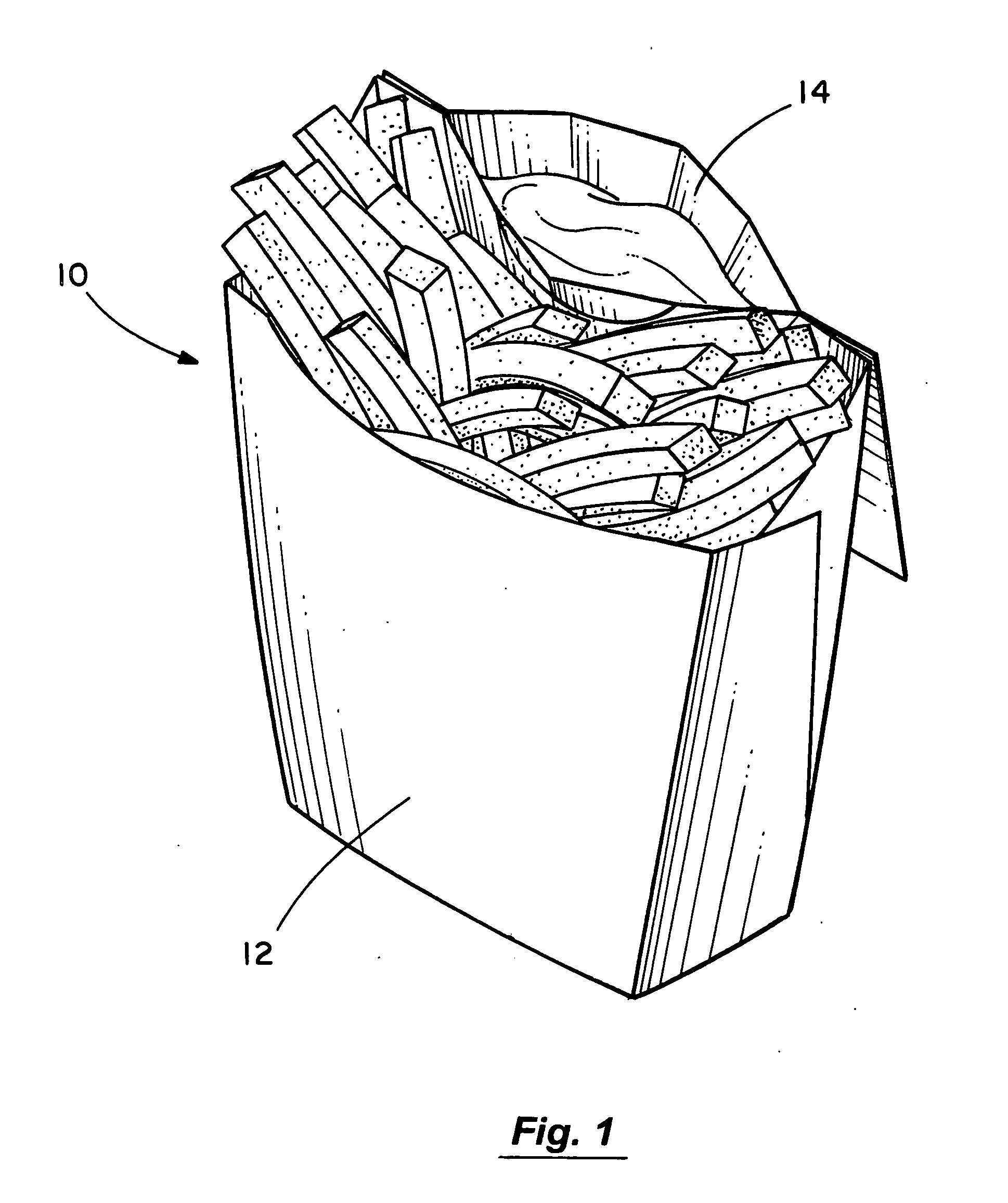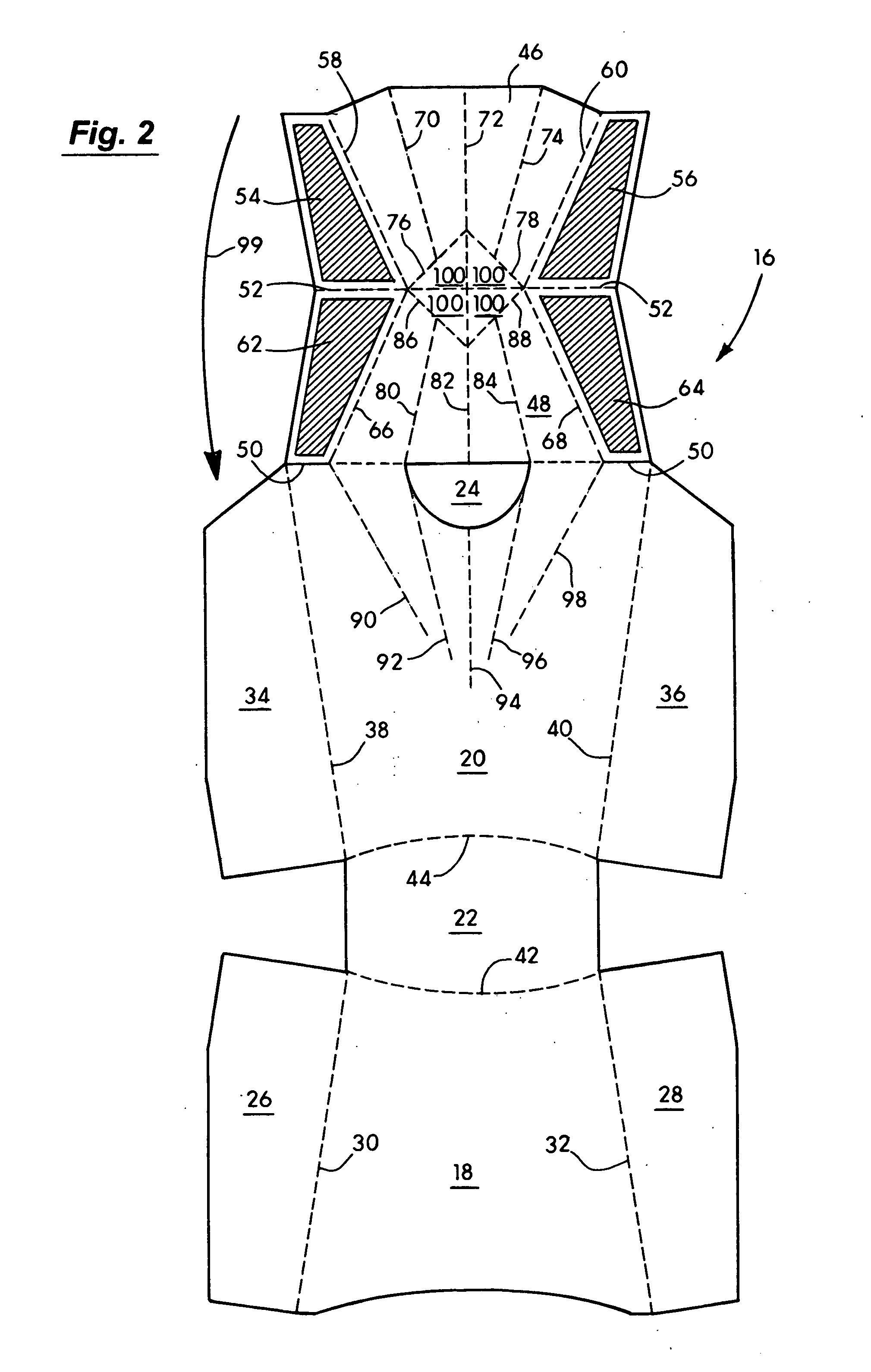Container with integral compartments
a technology of container and compartment, applied in the field of containers, can solve the problems of requiring two separate containers, affecting the availability of containers, and affecting the quality of containers, and achieve the effect of increasing the volum
- Summary
- Abstract
- Description
- Claims
- Application Information
AI Technical Summary
Benefits of technology
Problems solved by technology
Method used
Image
Examples
Embodiment Construction
[0031] In describing the present invention illustrated in the figures, specific terminology is employed for the sake of clarity. The invention, however, is not intended to be limited to the specific terminology so selected, and it is to be understood that each specific element includes all technical equivalents that operate in a similar manner to accomplish similar functions.
[0032] With regard to all such embodiments as may be herein described and contemplated, it will be appreciated that optional features, including, but not limited to, aesthetically pleasing coloration and surface design, and labeling and brand marking, may be provided in association with the present invention, all without departing from the scope of the invention.
[0033] Referring now to the drawings, wherein identical numerals indicate like parts, a container 10 is shown in FIG. 1 that comprises at least two compartments, a first compartment 12 and a second compartment 14 attached to the first compartment 12. I...
PUM
 Login to View More
Login to View More Abstract
Description
Claims
Application Information
 Login to View More
Login to View More - R&D
- Intellectual Property
- Life Sciences
- Materials
- Tech Scout
- Unparalleled Data Quality
- Higher Quality Content
- 60% Fewer Hallucinations
Browse by: Latest US Patents, China's latest patents, Technical Efficacy Thesaurus, Application Domain, Technology Topic, Popular Technical Reports.
© 2025 PatSnap. All rights reserved.Legal|Privacy policy|Modern Slavery Act Transparency Statement|Sitemap|About US| Contact US: help@patsnap.com



